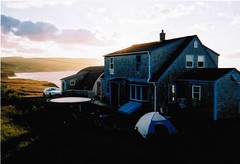If you have a green thumb, need a vacation, and you are willing to work approximately 4 hours a day in exchange for room and board, WWOOF (World Wide Opportunities On Organic Farms) may be your ticket to paradise. WWOOF is an exchange program that started in the United Kingdom in 1971 for people at least 16 years old, who are interested in organic farming and travel. You, the WWOOFer, pay your travel costs, but do pay any living costs, and the host farmers do not pay you a wage. Rather, for a period of time predetermined by the WWOOFer and the host, you get hands-on experience in organic and sustainable farming, and the farm gets extra hands.
WWOOFing opportunities exist globally. Those interested can WWOOF in the United States or abroad. An excellent place to begin your WWOOF journey is at the website, www.wwoofinternational.org/. This is a comprehensive site that thoroughly explains the program, requirements and rules for participation. This site has links for both volunteers and for organic farms interested in participating in this wonderful program. The site also includes links to specific WWOOF organizations in Africa, the Americas, Asia-Pacific and Europe. This site specifically addresses any concerns one may have regarding security, VISAS, insurance requirements and even specialty farming opportunities.
WWOOF presents a great opportunity for summer vacations. The host opportunities come in all sizes and shapes. A review of the site shows that there even are opportunities for family participation. What better way is there to spend a summer vacation learning something new and valuable as a family while also providing a service to the environment? This would be a truly unforgettable vacation with an added bonus of free time to tour places of interest while making a difference in sustainable living. This also is a great opportunity for high school and college students to enjoy unique cultural experiences during their summer vacations.
For anyone still planning a summer vacation, who is interested in learning about organic farming and who does not mind a few hours of work in exchange for room and board, WWOOF certainly should be a consideration. With our busy lives and the constraints of urban living, we often are limited in the ability to learn many aspects of organic farming. WWOOF links individuals interested in learning about organic farming with experts all over the world, who are more than willing to share their knowledge. This truly is a great way to live green, be green.
_________________
Sources for this article:
1. www.wwoofinternational.org/
2. http://www.cnn.com/2010/TRAVEL/06/15/wwoofing.volunteer.farming/index.html


